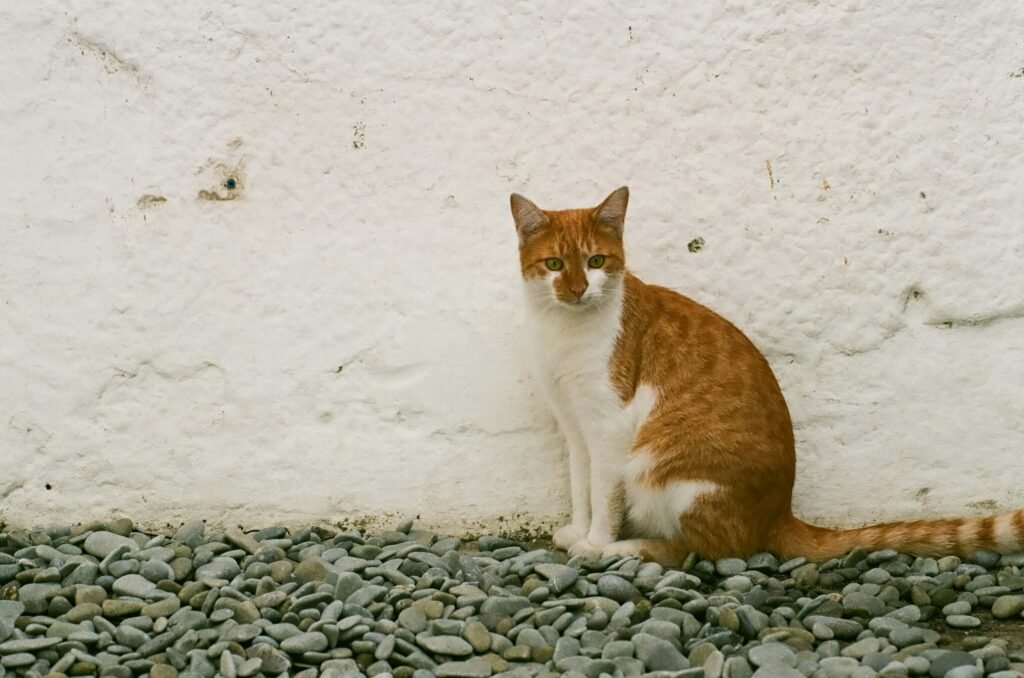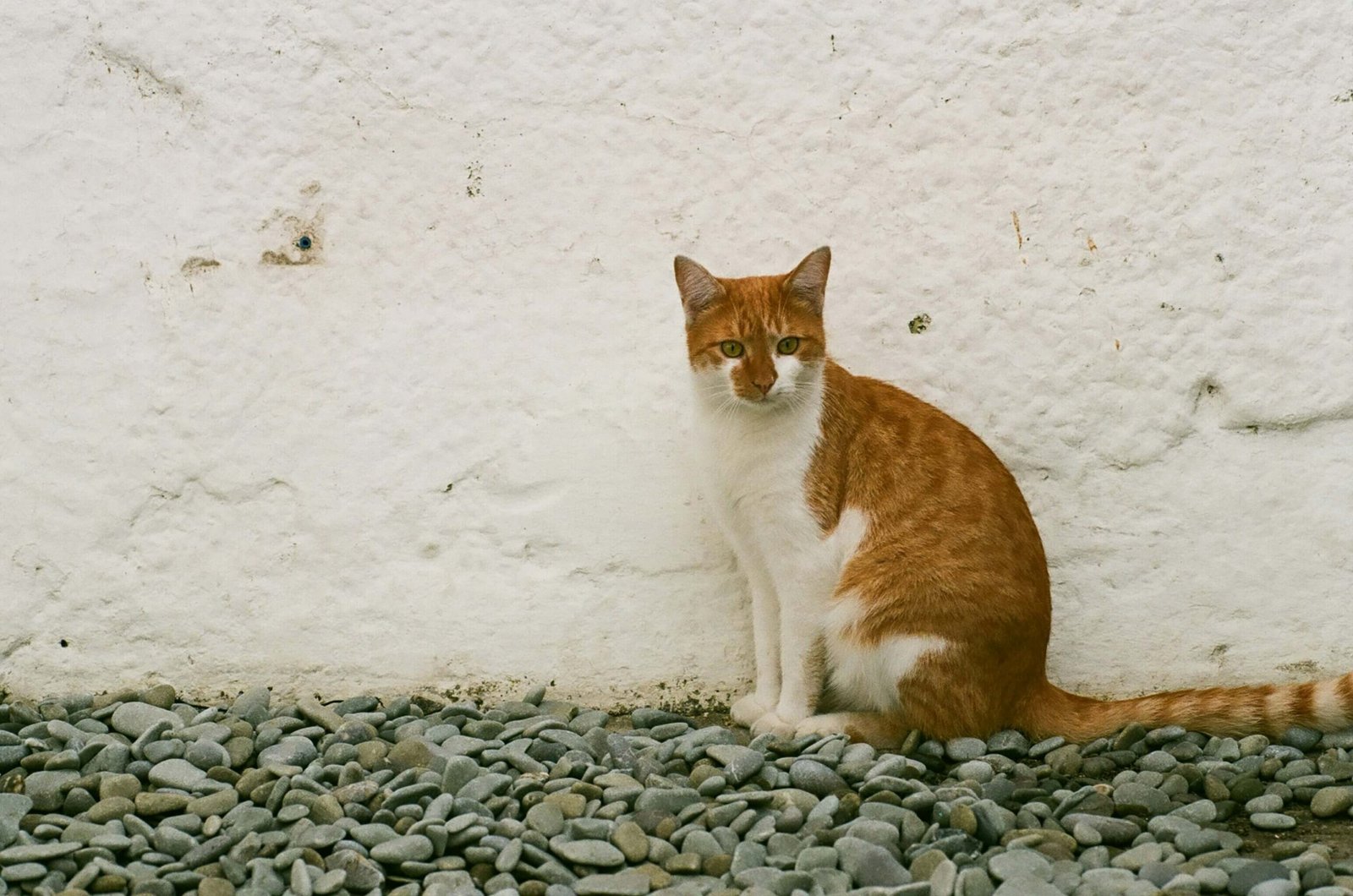Why Do Cats Chase Their Tails? Unraveling the Mystery Behind This Quirky Behavior
Cats are known for their graceful demeanor, mysterious personalities, and occasional bursts of playful antics. One such behavior that often leaves cat owners amused or even puzzled is when their feline friends start chasing their tails. While it may seem like a random act of silliness, there’s actually more to this behavior than meets the eye. From instinctual drives to potential health concerns, understanding why cats chase their tails can help you better care for your furry companion while appreciating their unique quirks.
The Science Behind Tail-Chasing: A Closer Look at Feline Behavior
Before diving into specific reasons, let’s explore some key factors that contribute to tail-chasing in cats. These behaviors can range from harmless playfulness to signs of underlying issues.
Playful Energy : Kittens and young cats often chase their tails as part of exploring their bodies and burning off excess energy.
Hunting Instincts : Even domesticated cats retain predatory instincts, and their tails might mimic moving prey during moments of excitement.
Curiosity : Cats are naturally curious creatures, and they may investigate their tails simply because they notice movement out of the corner of their eye.
Boredom Relief : Without enough stimulation or toys, cats may resort to entertaining themselves by chasing their tails.
Attention-Seeking Behavior : Some cats learn that tail-chasing gets them noticed by their humans, making it a way to bond or demand interaction.
Understanding these motivations helps us see tail-chasing not just as a funny quirk but as an important aspect of feline psychology. However, if the behavior seems excessive or unusual, further investigation may be necessary.
When Tail-Chasing Becomes a Concern: Signs of Potential Problems
While occasional tail-chasing is usually normal, certain patterns could indicate that something isn’t quite right with your cat. Here are some red flags to watch for:
Excessive Licking or Biting : If your cat chases its tail and then aggressively bites or licks the area, it could signal skin irritation or allergies.
Repetitive Behavior : Frequent or obsessive tail-chasing might point to anxiety or compulsive disorders in cats.
Growling or Hissing : Aggressive reactions toward their own tail can suggest pain or discomfort caused by injury or infection.
Lethargy or Loss of Appetite : Combined with tail-chasing, these symptoms could indicate systemic health problems requiring veterinary attention.
Changes in Mobility : Difficulty jumping, walking, or holding the tail upright may accompany tail-chasing due to spinal or neurological issues.
If you observe any of these warning signs, consulting a veterinarian is essential to rule out medical conditions. Early intervention ensures your cat stays happy and healthy.
Check this guide 👉Why Is My Cat Peeing on My Clothes? Best 7 Behavior Tips!
Check this guide 👉Why Does My Cat Sleep at My Feet? Best 7 Behavior Tips!
Check this guide 👉Why Is My Cat Pooping Outside the Litter Box? Best 7 Tips!

Reasons Cats Chase Their Tails | What You Can Do About It |
|---|---|
Playfulness | Provide interactive toys and activities. |
Hunting instincts | Offer puzzle feeders or simulated prey toys. |
Boredom | Schedule regular playtime sessions. |
Attention-seeking | Engage with your cat through games or cuddles. |
Health concerns | Consult a vet for proper diagnosis and treatment. |
How to Encourage Healthy Play Instead of Excessive Tail-Chasing
Redirecting your cat’s energy toward positive outlets can reduce unnecessary tail-chasing. Try these strategies to promote healthy habits:
Interactive Toys : Use wand toys, laser pointers, or feather teasers to engage your cat’s hunting instincts constructively.
Puzzle Feeders : Incorporate food-dispensing puzzles to mentally stimulate your cat while satisfying their natural curiosity.
Scheduled Playtime : Dedicate 15–20 minutes daily to active play sessions, ensuring your cat has ample opportunities to burn energy.
Scratching Posts : Provide scratching surfaces to redirect focus away from their tails and onto appropriate objects.
Environmental Enrichment : Add climbing trees, tunnels, or window perches to create a stimulating indoor environment.
By offering alternatives, you’ll help your cat channel their energy productively while minimizing repetitive behaviors.
Preventing Compulsive Tail-Chasing: Tips for Long-Term Success
If your cat exhibits compulsive tail-chasing, early intervention is crucial to prevent escalation. Consider these tips to manage and mitigate the issue:
Routine Veterinary Checkups : Regular visits allow vets to monitor your cat’s physical and mental health closely.
Behavioral Training : Work with a professional trainer to address obsessive tendencies using positive reinforcement techniques.
Stress Reduction : Minimize household stressors like loud noises or sudden changes in routine that might trigger anxiety-related behaviors.
Dietary Adjustments : Ensure your cat receives balanced nutrition to support overall well-being and reduce inflammatory responses.
Safe Spaces : Create cozy hiding spots where your cat can retreat when feeling overwhelmed or overstimulated.
With patience and consistency, many cats can overcome compulsive habits and enjoy calmer lifestyles.
The Role of Age in Tail-Chasing Behavior
A cat’s age can significantly influence why they chase their tails, as younger and older cats exhibit different motivations for this behavior. Understanding these distinctions can help you respond appropriately to your pet’s needs.
Kittens : Young kittens often chase their tails as part of exploring their bodies and learning motor skills.
Adolescent Cats : During adolescence, tail-chasing may be driven by bursts of energy and playful curiosity.
Adult Cats : In adult cats, tail-chasing is less common but could indicate boredom or stress if it occurs frequently.
Senior Cats : Older cats might chase their tails due to cognitive decline or discomfort caused by arthritis or other age-related conditions.
Lifespan Considerations : Recognizing how age impacts tail-chasing helps tailor care to each life stage, ensuring your cat remains comfortable and stimulated.
By considering your cat’s age, you can better interpret their actions and provide the right support at every stage of their life.
Environmental Factors That Influence Tail-Chasing
A cat’s surroundings play a crucial role in shaping their behavior, including whether they engage in tail-chasing. Identifying environmental triggers can help reduce unnecessary or problematic tail-chasing episodes.
Small Living Spaces : Cats in confined areas may become frustrated, leading to repetitive behaviors like tail-chasing.
Lack of Stimulation : An environment devoid of toys, climbing structures, or interactive elements can leave cats seeking entertainment through self-directed activities.
High-Stress Environments : Noisy households or frequent disruptions can heighten anxiety, prompting cats to chase their tails as a coping mechanism.
Competition with Other Pets : Cats living with other animals might chase their tails out of redirected aggression or territorial stress.
Changes in Routine : Moving homes, introducing new family members, or altering schedules can unsettle cats and trigger unusual behaviors.
Creating a calm, enriching environment minimizes stressors and reduces the likelihood of excessive tail-chasing.
Fun Ways to Redirect Your Cat’s Energy
If your cat frequently chases its tail, redirecting their energy toward more constructive activities can curb this habit while enhancing their quality of life. Here are some creative ideas to try:
Interactive Laser Toys : These mimic prey movements and encourage exercise without overstimulating your cat.
Feather Wands : Dangle a feather wand just out of reach to engage your cat’s hunting instincts in a controlled manner.
Treat Dispensing Balls : Fill these toys with kibble to combine mental stimulation with snack rewards.
Catnip Kickers : Soft toys infused with catnip can distract your cat from tail-chasing while providing sensory enjoyment.
DIY Obstacle Courses : Use boxes, tunnels, and furniture to create an indoor adventure zone for exploration and play.
By offering engaging alternatives, you’ll not only stop unwanted tail-chasing but also strengthen the bond between you and your feline friend.
Frequently Asked Questions About Cats Chasing Their Tails
Is tail-chasing always a sign of a problem?
No, occasional tail-chasing is typically harmless and stems from playfulness or curiosity. However, persistent or aggressive behavior warrants investigation.
Can boredom cause my cat to chase its tail?
Yes, lack of mental and physical stimulation can lead to self-entertainment behaviors like tail-chasing.
Should I punish my cat for chasing its tail?
No, punishment can increase stress and worsen the behavior. Instead, redirect their focus to more constructive activities.
What should I do if my cat injures itself while chasing its tail?
Contact your veterinarian immediately to assess any wounds or underlying causes contributing to the behavior.
How can I tell if my cat’s tail-chasing is compulsive?
Look for repetitive actions, distress signals, or interference with daily life. A vet or animal behaviorist can provide further guidance.
Celebrating Our Feline Friends’ Unique Behaviors
Cats bring joy, laughter, and endless fascination into our lives, and their quirky behaviors—like tail-chasing—are part of what makes them so endearing. By understanding the reasons behind this peculiar habit, we can ensure our furry companions remain happy, healthy, and enriched. Whether it’s providing engaging toys, addressing potential health concerns, or simply enjoying the show, embracing your cat’s individuality strengthens the bond between you both. So next time you catch your kitty spinning in circles, take a moment to appreciate the wonder of their world—and maybe snap a cute video too!
Understanding Cryptosporidium in Cats: Best 7 Expert Tips! – Spot symptoms, treat safely, and stop parasite spread in your home.
Understanding Cryptosporidium in Dogs: Best 7 Expert Tips! – Learn symptoms, treatment & prevention for this stubborn gut parasite.
Understanding Syringomyelia in Cats: Best 7 Expert Tips! – Recognize signs, manage pain, and support your cat’s neurological health with vet-backed guidance.
Understanding Syringomyelia in Dogs: Best 7 Expert Tips! – Expert insights on symptoms, MRI diagnosis, pain management & quality of life.





